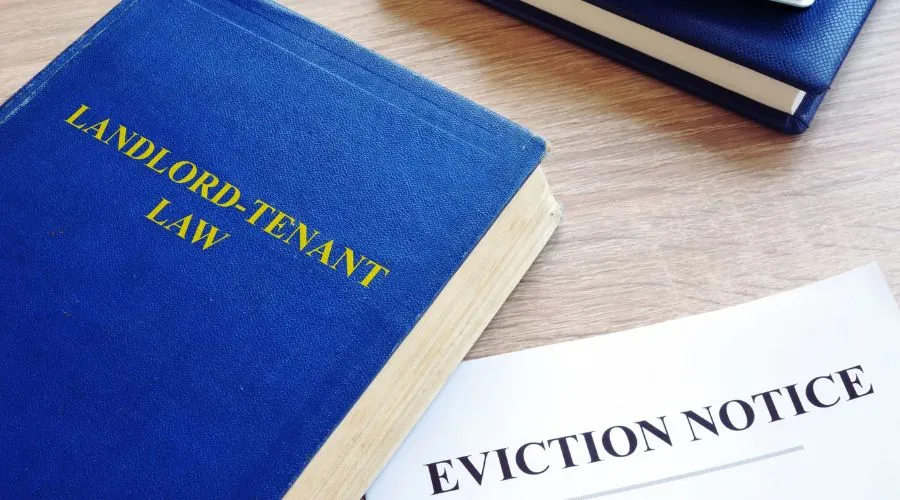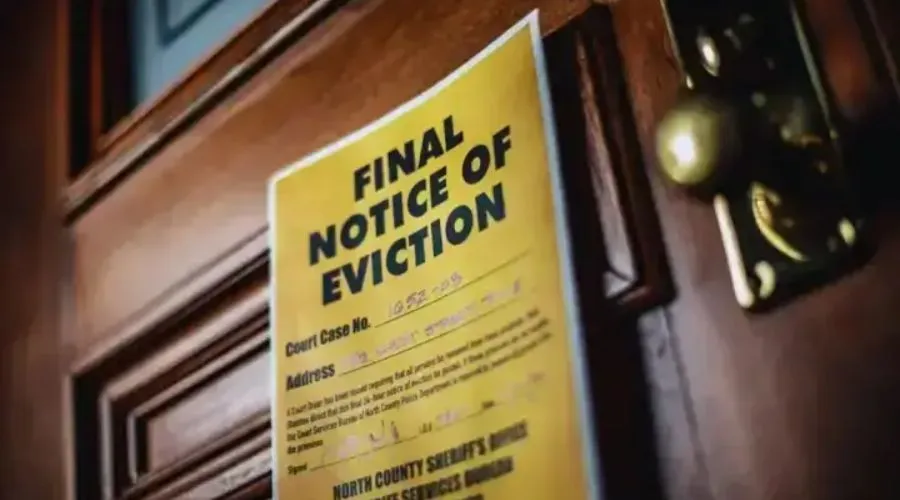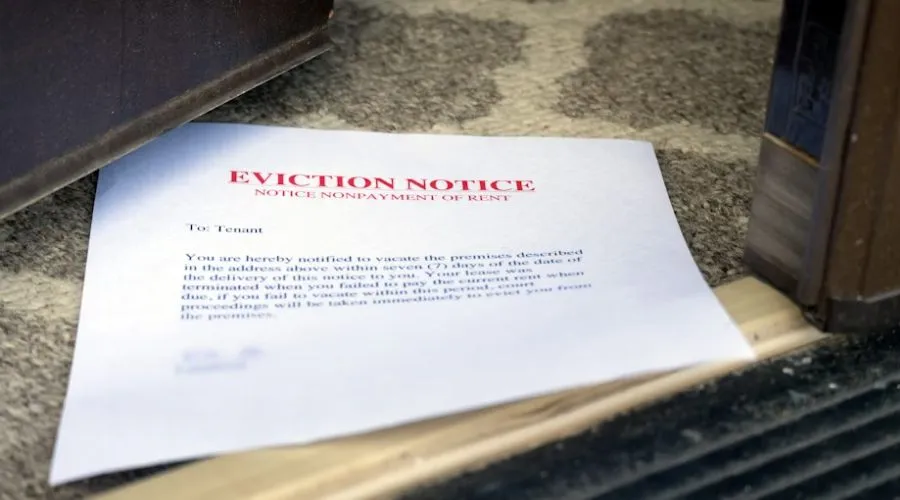If you’re a landlord facing the eviction process in Oklahoma, the steps may seem confusing at first. Missing a deadline or serving the wrong notice can easily stall your case. The good news is that with clear guidance, the process becomes manageable. LeaseRunner’s guide walks you through the essentials, highlights common mistakes, and shares useful advice so you can handle evictions with confidence, safeguard your property, and stay on the right side of the law.
The Proposed Changes for Oklahoma Eviction Laws
Before examining the details, it is essential to understand why Oklahoma lawmakers proposed changes to the eviction process. They introduced Senate Bill 128 (SB 128), extending the time between a summons and an eviction hearing from 3 days to 7 days. It also adds 5 more days between service and trial. These changes raised debate about timing, fairness, and the balance between tenant protections and landlord rights.
Why lawmakers floated changes
For readers studying the eviction process, legislators pointed to one of the nation’s quickest timelines and very short notice rules. Senate updates described Oklahoma’s schedule as among the fastest, prompting a push to slow the pace slightly so renters have more time to respond before the court procedure.
What SB 128 proposed?
SB 128 would have added five extra days between service of the summons and the hearing, and required that the summons be served at least seven days—not three—before trial. In effect, most hearings would move from a 5–10 day window after issuance to 10–15 days. Anyone tracking this eviction process should know these adjustments targeted notice and scheduling only.
How does that differ from the current law?
Today’s rules for the eviction process in Oklahoma still require service of the summons no less than three days before the hearing, and the court generally sets hearings five to ten days after the summons is issued. These are the operative standards while any reform remains unenacted, and they show how eviction laws in the U.S. can vary significantly across states.
Status update
The House and Senate sent SB 128 to the Governor on April 29, 2025. It was vetoed in early May, so nothing changed in the eviction process. Supporters argued the measure gave families modest, fair notice; the veto message said existing procedures already provide due process and that extending timelines would burden owners of rental property.
Pros and cons raised in the record
- Pros (supporters’ view): A few added days could reduce default judgment, improve appearance rates, and allow repayment or relocation planning—considered a balanced tweak to the eviction process in Oklahoma.
- Cons (veto rationale): Longer waits might hinder property recovery and make the eviction process in Oklahoma more cumbersome for landlords without clear need.

Legal Grounds for the Eviction in Oklahoma
Understanding the legal grounds is essential for both landlords and tenants because it defines when and how the eviction process in Oklahoma can lawfully begin. Below are the most common situations where removal may occur, along with the specific rules and notices required.
Failure to pay rent on time
The most common reason that starts the eviction process is unpaid rent. A landlord may serve a 5-Day Notice to Pay if a tenant misses a rent payment on time. Oklahoma state law considers rent late one day after its due date, and late fees may apply unless the rental agreement grants a grace period (a short period of extra time after the due date during which the tenant can pay rent without being considered late or charged a fee)..
If the tenant pays all outstanding rent in full within five days, the eviction action stops. This balances tenant rights with landlord protections under state law.
Violation of the lease/rental agreement
A lease is a legally binding contract, and both sides must comply. When a tenant commits a lease violation, landlords may start the eviction process in Oklahoma by serving a 15-Day Notice to Comply. The tenant has ten days to correct the violation and five more days to vacate if the issue is not fixed. Typical violations include:
- Damage to the rental unit
- Unauthorized pets in a pet-free property
- Overcrowding the unit
- Health or safety violations
If the tenant fails to comply, the landlord may proceed with an unlawful detainer case, allowing the court to decide through proper legal procedures.
Conducting illegal activity
When tenants engage in unlawful acts such as drug-related crimes, violence, or other felonies, landlords may move directly to court without prior notice. This eviction process allows for immediate action because such behavior endangers the community. Tenants facing these claims may require legal aid to ensure fair treatment.
Non-renewal of the lease after the rental period ends
Once a lease expires, landlords can regain possession if tenants do not leave or sign a renewal. Depending on tenancy type, landlords may issue either a 7-Day Notice to Quit or a 30-Day Notice to Quit. If tenants remain beyond this period, the landlord can initiate the eviction process through an unlawful detainer action, ensuring that the property is lawfully returned.
Other reasons
Besides the main causes above, other issues may also justify eviction, such as major property damage, persistent safety hazards, or disputes linked to squatter rights. In these cases, landlords must complete an eviction check and follow the proper legal procedures. Tenants can seek legal aid to understand their options and protect their rights throughout the process.

Serving an Eviction Notice in Oklahoma
The eviction process in Oklahoma starts with a proper written notice. Using the right form, content, and delivery method keeps your case on track and reduces delays. Below is a clear guide aligned with state law.
Types of Eviction Notices
To begin the eviction process, landlords must deliver the correct notice under state legal procedures.
- For non-payment of rent: If the tenancy is less than 3 months, the landlord must serve a 5-Day Notice to Pay r Quit. The tenant has 5 days to either pay the full rent due or vacate. If the tenancy is 3 months or longer, the landlord must serve a 10-Day Notice to Pay or Quit.
- For lease violations (other than non-payment): Landlord must provide a 15-Day Notice to Cure or Quit. The tenant has 10 days to correct the violation (such as unauthorized pets, property damage, or illegal activity). If the violation is corrected within 10 days, the lease continues. If not, the tenancy terminates on the 15th day.
- For unconditional notice to quit: In cases of serious or repeated violations that threaten health, safety, or involve criminal activity, the landlord may serve an Unconditional 15-Day Notice to Quit. The tenant must vacate within 15 days, and no opportunity to cure is required.
- 15-Day Notice to Comply (lease breach): tenant receives 10 days to fix the violation; if not cured, they must leave within five more days.
- 7-Day Notice to Quit (ending weekly tenancy) and 30-Day Notice to Quit (ending monthly or at-will): applied to end a rental agreement at the close of the term.
What to Include in the Notice?
Each notice in the eviction process must be written and contain clear details: the legal ground for eviction, the precise deadline for compliance or move-out, and a warning that failure to comply may lead to court action under state laws related to housing. Without these details, the landlord cannot move forward with legal proceedings.
How to Serve the Notice Legally?
Delivery must be handled correctly to move forward in the eviction process in Oklahoma. Before serving, landlords should ensure the notice is drafted in compliance with legal requirements; resources such as how to write an eviction notice can help you understand what information must be included.
Once the notice is prepared, Oklahoma law allows several methods of delivery:
- Personal service to the tenant.
- Substituted service to someone 15 years or older at the residence.
- Certified mail with a return receipt.
- Posting at the rental unit as a last resort.
Once a complaint is filed, only a sheriff or licensed process server may handle the Summons and Complaint, never the landlord. Proper service helps avoid disputes later about normal wear and tear versus true lease violations, since the court focuses on evidence tied to the rental agreement.
Important Considerations
Choosing the wrong type of notice or serving it incorrectly can invalidate the entire eviction process. Courts carefully review whether landlords follow proper legal procedures, and failure to do so may cause delays or dismissal.
Tenants who pay rent within the five-day window in nonpayment cases stop the eviction entirely. After the notice period expires, landlords can file a Forcible Entry and Detainer action; hearings are generally scheduled within 5–10 days.
Courts also perform an eviction check by reviewing submitted evidence—such as the deed, the payment records—to decide on possession.
Step-by-Step Oklahoma Eviction Procedure
Understanding the eviction process in Oklahoma requires following each stage in order. Below is a clear, step-by-step outline that walks landlords through every action, from serving the first notice to regaining full possession of the rental property.
Step 1 – Serve Notice
The eviction process always starts with a proper written notice. Weekly tenancies receive a 7-Day Notice to Quit; month-to-month or at-will renters get a 30-Day Notice to Quit. For noncompliance, send a clear notice to cure or vacate and wait for the notice window to run. Starting this eviction process before the notice period ends can derail the case.
Step 2 – Filing a Complaint
After the notice expires, the landlord begins a Forcible Entry and Detainer action in small claims court where the property sits. Complete the court forms and pay the filing fee. Timing depends on the notice used - Oklahoma allows filing as soon as 24 hours after some notices and up to 30 days for others—so track dates to keep Oklahoma’s eviction process compliant.
Step 3 – Serve the Legal Complaint
The Summons and Complaint must be delivered by a process server or the sheriff—not the landlord. Permitted methods include personal service, substituted service on a co-resident 15+, certified mail with return receipt, or posting as a last resort (within five days before the hearing).
Service must occur at least 3–5 days before the court. Correct service is essential to the eviction process in Oklahoma.
Step 4 – Wait for Tenant Response
Tenants may file an answer, but Oklahoma does not require one. After service, the court sets a hearing, typically about 5–10 days after filing. Use this time to assemble evidence so the eviction process stays on track.
Step 5 – Attend the Court Hearing
Bring proof: deed or lease, payment records, ledgers, bank statements, witness statements, and photo/video of violations. If the tenant does not appear, judgment may be entered by default. If the landlord prevails, the renter has three days to request a new trial - yet the Oklahoma eviction process continues unless the court orders otherwise.
Step 6 – Obtain a Writ of Possession
Upon judgment, request a Writ of Execution. Once issued and delivered, it tells the tenant to vacate within 48 hours. This writ is the key enforcement step of the eviction process in Oklahoma.
Step 7 – Regain Possession of the Property
Only law enforcement can remove occupants. Move-out may take a few days to a few weeks, depending on scheduling, but the eviction process concludes once the premises are lawfully returned to the landlord.

Eviction Timeline & Costs in Oklahoma
The eviction process in Oklahoma typically takes about 11 to 50 days in total, depending on the type of notice served and the court’s scheduling. The table below condenses each stage of the process with its average time frame and typical fees, helping renters and landlords plan their next steps in a lawful and organized way.
Required Documents for the Oklahoma Eviction Process
To properly handle the eviction process in Oklahoma, landlords must organize the right paperwork and supporting evidence. The following sections outline best practices for record keeping, proof required for unpaid rent, documentation of lease violations, and detailed property condition records.
Best Practices for Record Keeping
To keep the eviction process on track, consolidate everything in one digital matter file. Digitize every page, use consistent filenames (YYYY-MM-DD_type_subject), and store in redundant cloud folders with access logs. Export message threads from email/SMS, keep a contact log of all landlord–tenant communications, and preserve metadata on images and videos.
From your property management platform, export ledgers, work orders, and notes to PDF. Maintain a simple chronology so any judge can follow the sequence of events during the Oklahoma eviction process.
Evidence to show for not paying rent
For rent defaults under the eviction process, assemble:
- Lease showing due date and late-fee terms.
- Full rent ledger and bank proofs (receipts, NSF returns, chargebacks).
- 5-Day written demand for payment plus delivery proof (mail certificate, personal service return). Under 41 O.S. §131(B), termination may follow if the balance is not paid within five days of written demand, and that demand is also a demand for possession.
- Include any partial-payment agreements and your notices reminding the resident of the deadline. This targeted packet helps resolve nonpayment claims quickly in the eviction process in Oklahoma.
Evidence to show for lease violations
When enforcing behavioral or lease-term breaches in the eviction process, prepare:
- The rental agreement section was violated.
- A written notice stating termination no sooner than Day 15 unless cured within 10 days, with proof of delivery. Oklahoma law allows lease termination if the breach is not remedied within 10 days of receipt; subsequent similar breaches may allow immediate termination.
- Dated photos/videos, written incident reports, neighbor/employee statements, and any police or security reports. These materials substantiate violations during the Oklahoma eviction process.
Property Condition Documentation
Strong condition records reduce disputes in the eviction process and demonstrate compliance with state legal procedures. Keep the signed move-in checklist, periodic inspection reports, and move-out checklist; pair each with date-stamped photos or video. Add invoices/quotes for repairs, vendor work orders, and correspondence about access or fixes.
Clearly distinguish damage from normal wear and tear so the court can see which costs are legitimately recoverable. Presenting this neutral, time-sequenced record helps the court assess damages and credibility during the eviction process in Oklahoma.

5 Tips to Avoid Common Eviction Mistakes
When dealing with the eviction process in Oklahoma, even small errors can delay your case or cause dismissal in court. By understanding the legal requirements and following each step carefully, landlords can protect their property rights while maintaining compliance with state law. Below are five essential practices to avoid the most frequent mistakes.
1. Serve the Correct Notice
The first step in any eviction is delivering the proper written notice. Oklahoma law requires specific timelines, such as a 5-day notice for nonpayment of rent or a 15-day notice to end a month-to-month tenancy. Using the wrong notice period or failing to provide it in writing can make your case invalid. Always double-check statutory requirements before serving documents.
2. Keep Detailed Records
Judges often rely on evidence to determine the outcome of an eviction. Maintain accurate records of payment history, lease agreements, and communication with tenants. Documentation should include late notices, repair requests, and proof of notice delivery. Organized records can significantly strengthen your claim in court.
3. File Properly with the Court
Once the notice period has expired, landlords must file a Forcible Entry and Detainer (FED) action in the appropriate district court. Errors in filing forms, submitting incomplete information, or choosing the wrong jurisdiction can delay proceedings. Ensure all paperwork is complete and submitted according to court rules.
4. Avoid Self-Help Evictions
Oklahoma strictly prohibits landlords from changing locks, shutting off utilities, or removing tenant belongings without a court order. These actions are considered “self-help evictions” and can expose landlords to liability and fines. Always wait for the official writ of execution issued by the court before regaining possession of the property.
5. Attend the Court Hearing Prepared
At the hearing, the landlord must prove that the eviction is justified. Bring all necessary documents, including the lease agreement, notices served, payment history, and any relevant photos or witness testimony. Failing to appear or being unprepared can result in dismissal, even if the tenant has violated the lease. Preparation ensures the judge can clearly see the validity of your claim.
Conclusion
Mastering the eviction process in Oklahoma is not only about protecting your property—it’s about doing so legally and effectively. By avoiding common mistakes and following each requirement carefully, landlords can save time, reduce stress, and maintain compliance with state law. Whether you manage a single unit or multiple properties, staying informed gives you the confidence to act decisively. With the right preparation, eviction doesn’t have to be overwhelming—it can be a straightforward, fair resolution.
FAQs
1. What’s the fastest a landlord can evict a tenant in Oklahoma?
The quickest eviction in Oklahoma usually occurs for nonpayment of rent. Landlords may serve a 5-day eviction notice. If the tenant does not pay within that time, the landlord can immediately file a Forcible Entry and Detainer (FED) action in court. Depending on the court’s schedule, the hearing may happen within 10–14 days, making the entire process as short as two to three weeks.
2. Is a 5-day eviction notice legal in Oklahoma?
Yes, under Oklahoma landlord-tenant law, a 5-day eviction notice is valid when rent is unpaid. Tenants are given five days to either pay the overdue amount or vacate the property. If payment is made in full during that time, the eviction is stopped. If not, the landlord can proceed to file an eviction case in district court. Notices must be in writing and delivered according to state law.
3. How long does a landlord have to give you to move out in Oklahoma?
The timeline depends on the reason for eviction. For nonpayment of rent, tenants receive 5 days. For lease violations, tenants typically get 10 days to fix the issue or move. Month-to-month tenancies require a 30-day notice to end the lease. These notice periods are mandatory, and failing to follow them correctly can cause the court to dismiss the landlord’s eviction case.



